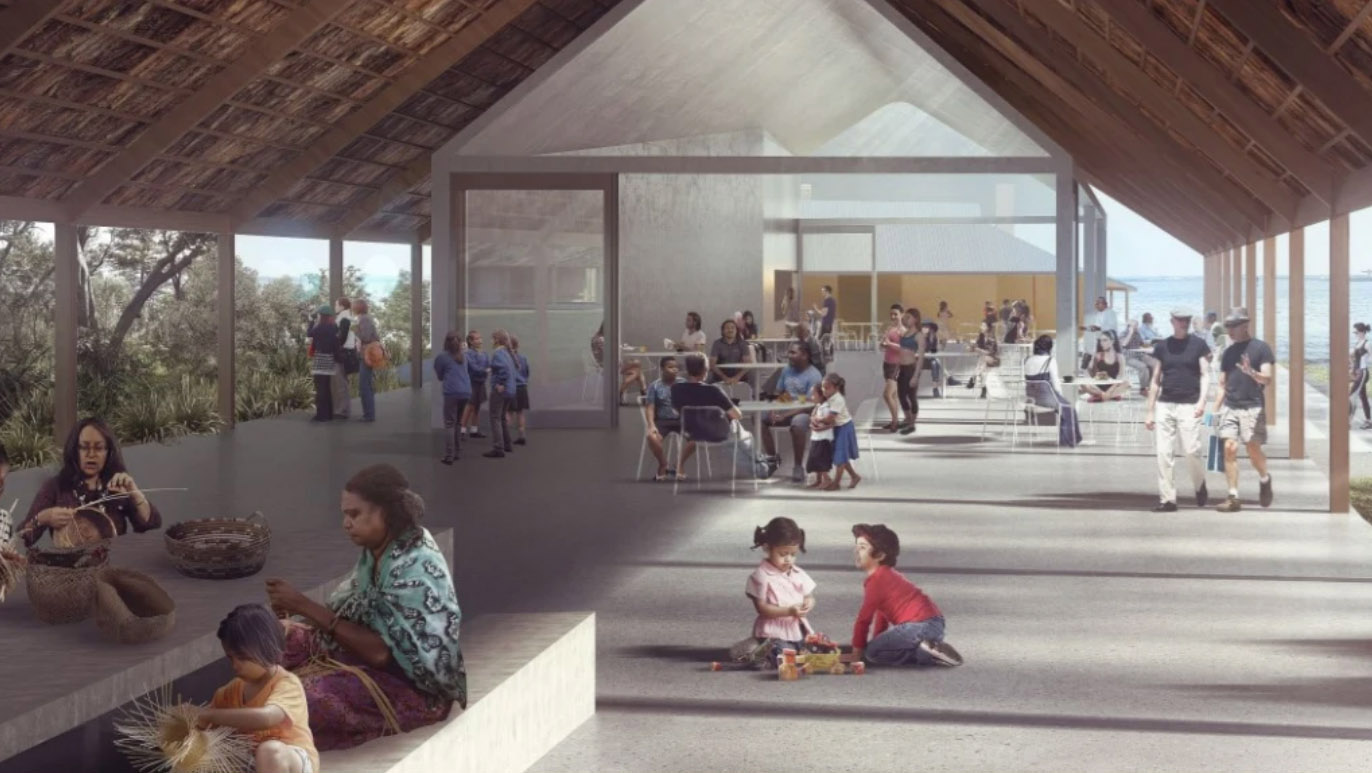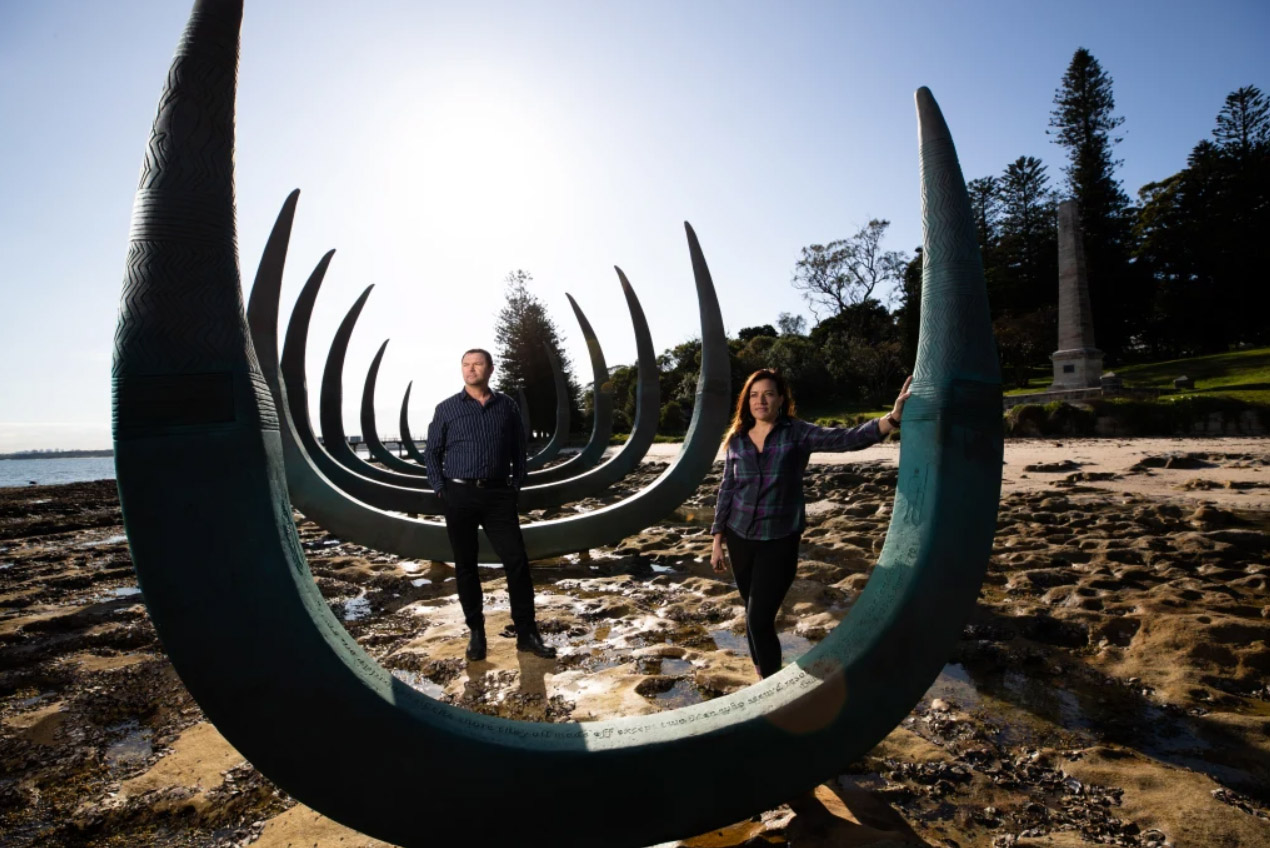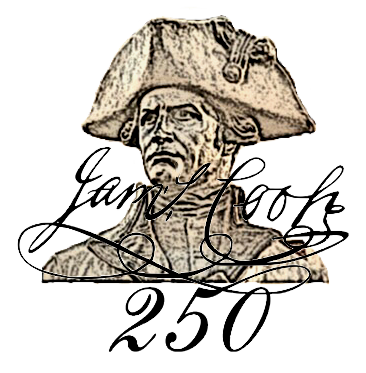The $50 million redevelopment of the site where Captain Cook first clashed with Aboriginal Australians is at the centre of a government push to incorporate Indigenous culture into public spaces.
Indigenous architects and artists are leading the redevelopment of the Meeting Place Precinct in Kamay Botany Bay, which will include an exhibition space at the visitor centre, a cafe, and educational programs.

A concept design of a new cafe at Kamay Botany Bay National Park, among the new facilities to be co-designed with the Aboriginal community. CREDIT: NEESON MURCUTT ARCHITECTS
This comes after the NSW Government Architect’s office published a paper praising Aboriginal author Bruce Pascoe’s award-winning book Dark Emu in the context of promoting Aboriginal culture in the NSW planning system.
The book details a pre-existing agricultural economy that was destroyed by Europeans, contributing to a “collective amnesia” about Aboriginal history.
Walbanga and Wadi Wadi woman Alison Page, whose sculpture ‘The Eyes of the Land and Sea’ is part of the memorial , said Cook,”a largely misunderstood figure”, was no longer the “bogyman” to her.
“He writes this beautiful quote about the Indigenous people being the happiest people he ever witnessed. This whole discussion about Country, you know Cook actually kind of got it,” she said.
“He would’ve appreciated the scientific practice, the agriculture that was going on here, if only he could see it.”
Ms Page, whose sculpture – created with Nik Lachajczak – symbolises both the ribs of the Endeavour and the bones of a whale (a Gweagal totem) said the NSW government was leading a “phenomenal” change.

Alison Page and Dillon Kombumerri with sculpture ‘The Eyes of the Land and Sea’ at Captain Cook’s landing place in Kamay Botany National Park. CREDIT: JANIE BARRETT
Yugembir man Dillon Kombumerri, a principal architect with the Government Architect’s office, is leading the push to have Aboriginal knowledge and values incorporated into the construction of urban environments so that local Indigenous people are not just consulted but act as co-designers in the process.
He said 2018 amendments to state planning laws requiring sustainable management of Aboriginal cultural heritage caused the design industry to go into “meltdown” as no one knew how to respond to the mandate.

The artwork symbolises both the ribs of the Endeavour and the bones of a whale. CREDIT: JANIE BARRETT
The Government Architect’s office published discussion paper Designing with Country earlier this year to promote Aboriginal culture in the NSW planning system by introducing concepts such as biophilic design (relationships between humans and nature) and wayfinding through linking landmarks to storytelling.
“In Bruce Pascoe’s book, Dark Emu, it is clear that early post-contact, few colonists were here to marvel at a newly discovered civilisation; they were here to replace it,” the paper says.
“The devastating impact of colonisation, with its disruption to Aboriginal landscape, people and cultural practices, has over time created a collective amnesia regarding this history.”
Mr Kombumerri said generations of built-up cultural bias meant people were unable to see systems of managing the land that were right in front of them, such as the growing of native grasses and traditional fire burning.
“The thing about cultural amnesia is this idea that Country is still speaking, but we may not be able to hear her,” he said.
